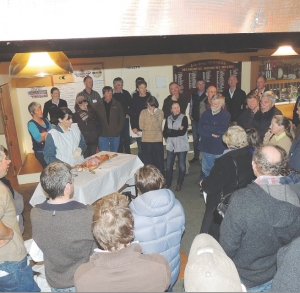And it’s not just because low-condition ewes drop smaller lambs and have less milk: they’re often dopier too, reducing mothering ability, Agresearch’s Julie Everett-Hincks, a specialist in lamb mortality and survival, told a recent Beef + Lamb New Zealand ‘Farming for Profit’ workshop at Pleasant Point, South Canterbury.
“Ewes that are losing condition are losing body fat. In extreme cases that’s seen as pregnancy toxaemia (sleepy sickness) but at a subclinical level they are dopier,” she explained.
And while many will blame lamb losses on bad weather at the time they drop, it is weather in the weeks and days leading up to birth which has the greatest affect on survival.
“If the ewes are in negative energy balance a lot of lambs will be found dead. That’s why I question pre-lamb shearing,” commented Everett-Hincks.
Her research has shown the optimum weight for lambs at birth is 5kg. “That’s 2kg more than it was 30 years ago.”
Lighter, or heavier, and mortality rates start to mount. “A 3.5kg lamb has a 10% lower chance of survival than a 4.5kg one.”
Weighing a few lambs should be the first step in identifying causes of losses, even if a full post mortem isn’t carried out, she suggests.
A look at the feet will tell whether the lamb ever walked or not. The next step for an on-farm post-mortem is to slice the lamb open from the bottom lip, down its neck and through the bottom of its rib cage to reveal the internal organs.
If the thyroid glands’ weight divided by the lambs’ weight is equal or greater than 0.4, that’s a sign iodine is deficient. “If they are, they can’t cope with being cold.”
A look at the lungs will tell if it breathed: spongy pink means it did, firmer dark crimson means it didn’t. If in doubt drop them in some water and see if they float. If they don’t, the lamb never breathed.
Evidence of tissue degradation points to a still birth, while bruising (oedema), including jelly-like fluid under the chin, indicates a difficult, probably prolonged, birth. Similarly a ruptured liver.
Contrary to intuition, it is the smaller, lighter triplet or twin lambs that most often show oedema.
“The problem is two try to come out at the same time. At optimum birthweights only one lamb can get down the birth canal.”
No fat reserves round the kidneys show the lamb died of starvation. If it died of something else, the amount of fat is an indication of ewe nutrition.
“In some cases you can’t even see the [lambs’] kidneys, there’s so much fat.”
Another indication of whether it fed or not are white lines – lacteals – running away from the guts. “That’s actually milk going into the bloodstream.”
Lesions on the liver and/or around the naval are a sign of infection as cause of death.









